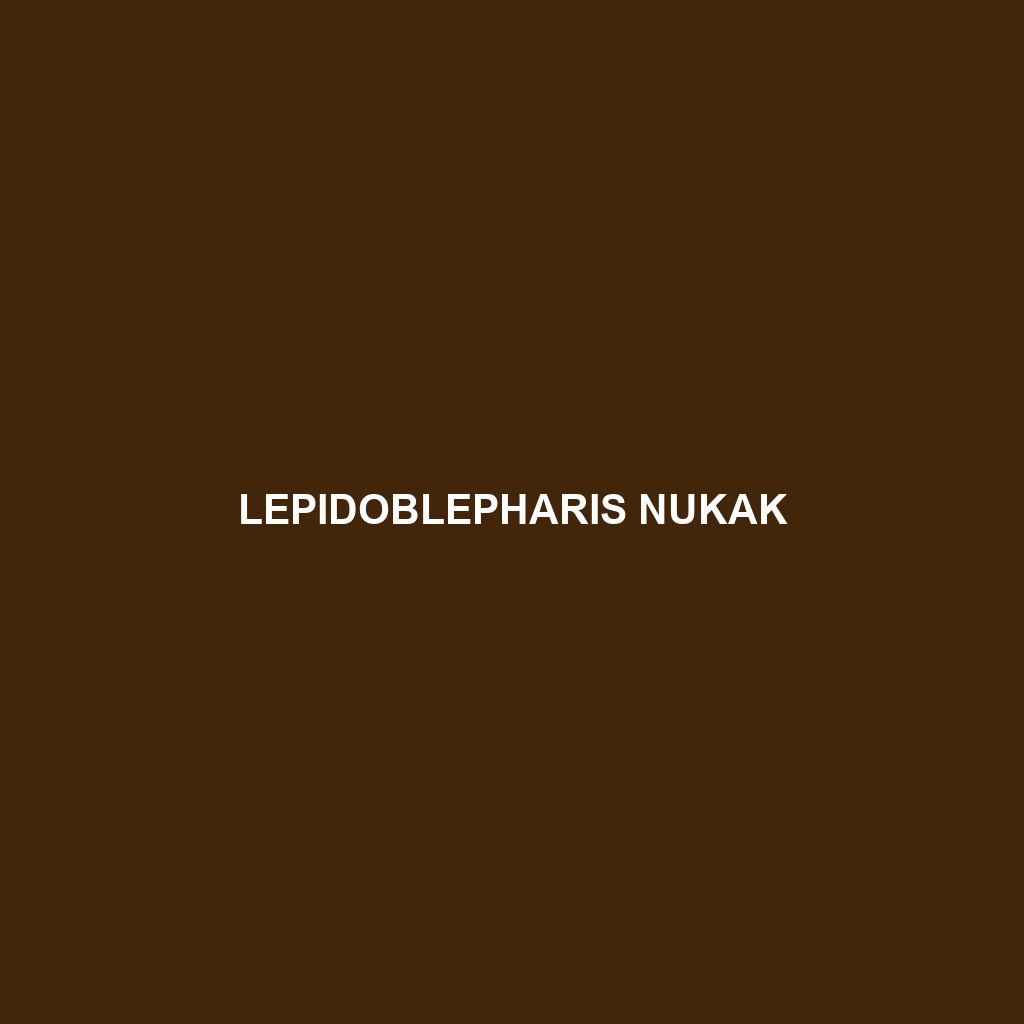Common Name
Lepidoblepharis nukak
Scientific Name
Lepidoblepharis nukak
Habitat
The Lepidoblepharis nukak is primarily found in the lush rainforests of Colombia, specifically within the Amazon Basin and the terrains adjacent to the Nukak people’s territories. These regions experience high humidity and temperatures ranging from 22°C to 30°C (72°F to 86°F). The dense canopy created by the towering trees provides crucial shelter and sustenance for this species, thriving in complex ecosystems that include layers of foliage, decomposing organic matter, and a variety of micro habitats. The nurturing conditions of these rainforests create a thriving environment for this species, allowing them to effectively forage, mate, and reproduce.
Physical Characteristics
The Lepidoblepharis nukak is a small, slender lizard, measuring approximately 7 to 10 cm in length. Its most notable feature is its smooth, brightly colored skin, adorned with striking patterns that typically include shades of green, brown, and yellow. This coloration serves as a form of camouflage, allowing the lizard to blend seamlessly with the foliage of its rainforest habitat. Their limbs are relatively short, supporting their nimble movements through the dense underbrush. The unique protrusions above their eyes add to their distinctive appearance, giving them a ‘crowned’ look that differentiates them from other species in the Lepidoblepharis genus.
Behavior
Diet
The diet of the Lepidoblepharis nukak primarily consists of small invertebrates, marking it as an insectivore. The lizard actively hunts for ants, beetles, and other small arthropods that thrive in their rainforest habitat. They utilize their keen eyesight and agile movements to capture prey effectively. Occasionally, they may consume plant matter, which indicates a slight omnivorous tendency during lean periods when insects are scarce.
Reproduction
During the mating season, which commonly occurs from December to February, male Lepidoblepharis nukak will establish territories through vocalizations and physical displays. After successful mating, female lizards typically lay 1 to 2 eggs in hidden, moist locations within the forest floor. The incubation period lasts about 60 days, with hatchlings emerging fully formed and independent. Parental care is minimal, as the young are instinctually capable of foraging for themselves from the moment they hatch.
Conservation Status
Currently, Lepidoblepharis nukak is classified as vulnerable due to habitat loss driven by logging activities, agricultural expansion, and infrastructure development. Conservation efforts are critically needed to preserve their natural habitats and the biodiversity of Colombia’s rainforests. Organizations are currently working on habitat restoration projects and promoting sustainable practices among local communities to ensure the survival of this unique lizard species.
Interesting Facts
Among the most interesting aspects of Lepidoblepharis nukak is its remarkable ability to change colors slightly depending on its surroundings, aided by specialized skin cells. This adaptation not only helps in camouflage but may also play a role in communication with other lizards. Additionally, this species has developed a unique defense mechanism; when threatened, it can flatten its body and remain motionless, effectively mimicking the appearance of dead vegetation to evade predators.
Role in Ecosystem
The Lepidoblepharis nukak plays a fundamental role in its ecosystem as a predator of insects, aiding in population control of various arthropod species. This behavior contributes to the health of the rainforest by maintaining the balance between predator and prey. Additionally, their presence in the food web underscores their importance as a food source for larger predators, reinforcing their position in the ecological hierarchy. By facilitating nutrient cycling through their feeding and nesting habits, they help to sustain the richness of the biodiversity found in the Amazonian rainforest.
